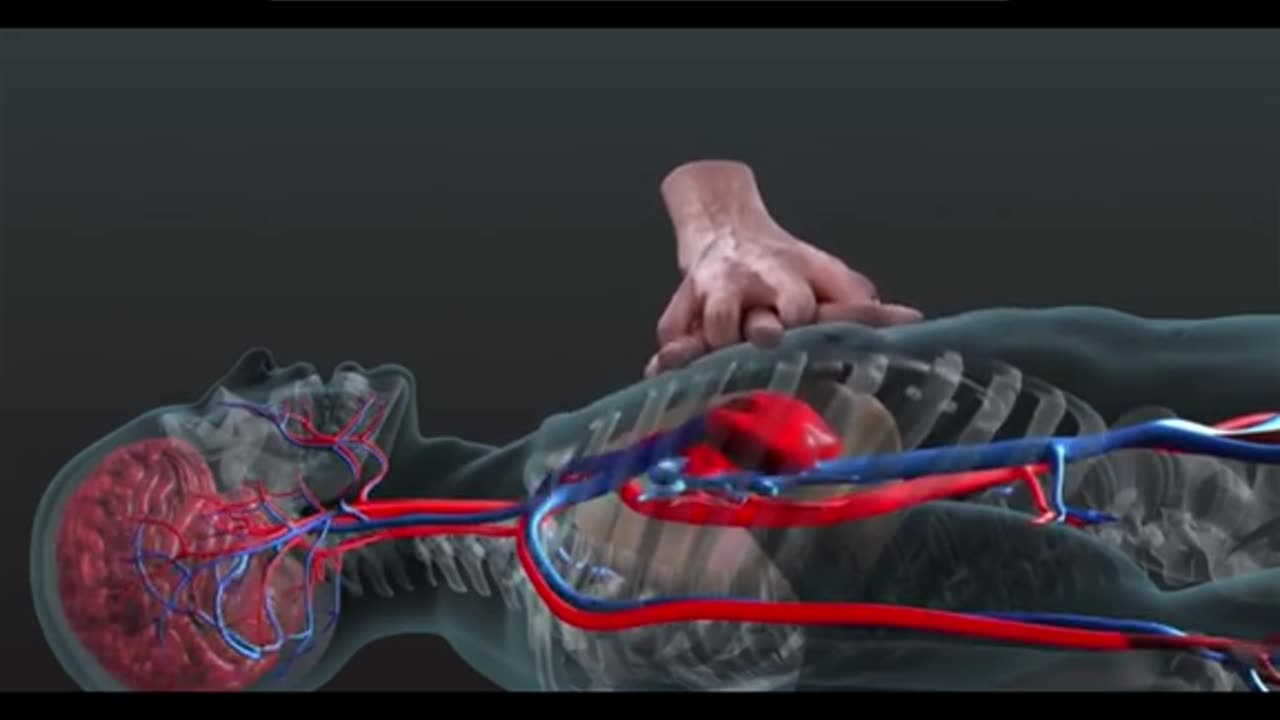Premium Only Content

"Understanding How Cardiopulmonary Resuscitation (CPR) Works: Step-by-Step Guide"
Cardiopulmonary Resuscitation (CPR) is a life-saving technique used in emergencies to restore blood circulation and breathing in a person whose heart has stopped beating or is in a state of cardiac arrest. Here's a simplified outline of the CPR procedure:
1. Assess the Situation: Ensure the area is safe for both you and the victim. Check if the person is responsive by tapping their shoulder and shouting.
2. Call for Help: If the person is unresponsive and not breathing normally, or only gasping, call emergency services or ask someone nearby to do so.
3. Open the Airway: Gently tilt the person's head backward and lift the chin to open the airway.
4. Check for Breathing: Look, listen, and feel for breathing. If the person is not breathing or only gasping, start CPR.
5. Begin Chest Compressions: Place the heel of one hand on the center of the person's chest, just below the nipple line.
- Place the other hand on top of the first hand and interlock the fingers.
- Keep your arms straight and position your shoulders directly above your hands.
- Use your body weight to compress the chest at least 2 inches deep at a rate of about 100-120 compressions per minute.
6. Give Rescue Breaths:
- After 30 compressions, give 2 rescue breaths.
- Pinch the person's nose shut and cover their mouth with yours, making a tight seal.
- Give a breath that makes the chest rise visibly.
- If the chest doesn't rise, reposition the head and try again.
7. Continue Compressions and Breaths:
- Continue cycles of 30 chest compressions and 2 rescue breaths.
- Aim for a compression-ventilation ratio of 30:2.
8. Continue Until Help Arrives:
- Continue performing CPR until:
- Professional help arrives and takes over.
- The person starts showing signs of life, like breathing normally.
- You are too exhausted to continue.
Remember that the key to effective CPR is starting promptly and maintaining a consistent rhythm and depth for chest compressions. While this outline provides a general idea of the procedure, it's highly recommended to take a certified CPR course for hands-on training and certification.
-

SpartakusLIVE
10 hours agoThe BADDEST Duo in WZ Exhibits PEAK Physique || Duos w/ Sophiesnazz to start, quads later
165K1 -
 2:49:37
2:49:37
RattlesnakeTV
22 hours ago $0.29 earnedLIVE DEBATE! Lord Jake vs Crazy Feminist
27K15 -
 4:00:42
4:00:42
Badlands Media
13 hours agoThe Narrative Ep. 35: Codex of Truth
92.9K45 -
 3:55:56
3:55:56
Due Dissidence
16 hours agoSchmuley TRASHES Shapiro, Maxwell Sings For Pardon, Uhuru Doc Preview - Live From St. Louis!
48.3K46 -
 LIVE
LIVE
Lofi Girl
2 years agolofi hip hop radio 📚 - beats to relax/study to
373 watching -
 2:23:21
2:23:21
PandaSub2000
5 days agoMadison VR (Part 4) | PSVR 2000 (Original Live Version)
27.5K2 -
 2:34:32
2:34:32
Badlands Media
5 days agoCODEX 9/11
309K268 -
 1:53:43
1:53:43
Nerdrotic
11 hours ago $0.37 earnedMysteries of 3I/ATLAS | Forbidden Frontier #113
62.9K5 -
 2:04:21
2:04:21
vivafrei
1 day agoEp. 278: D.C. Peace Wave! Big Tish & Nipple Judge SPANKED! "Maryland Man" Trafficker FREE & MORE?
120K143 -
 3:02:42
3:02:42
Damysus Gaming
7 hours agoBorderlands 3 - Part 8 - FL4K Time | Children of the Vault be Warned!
27.4K